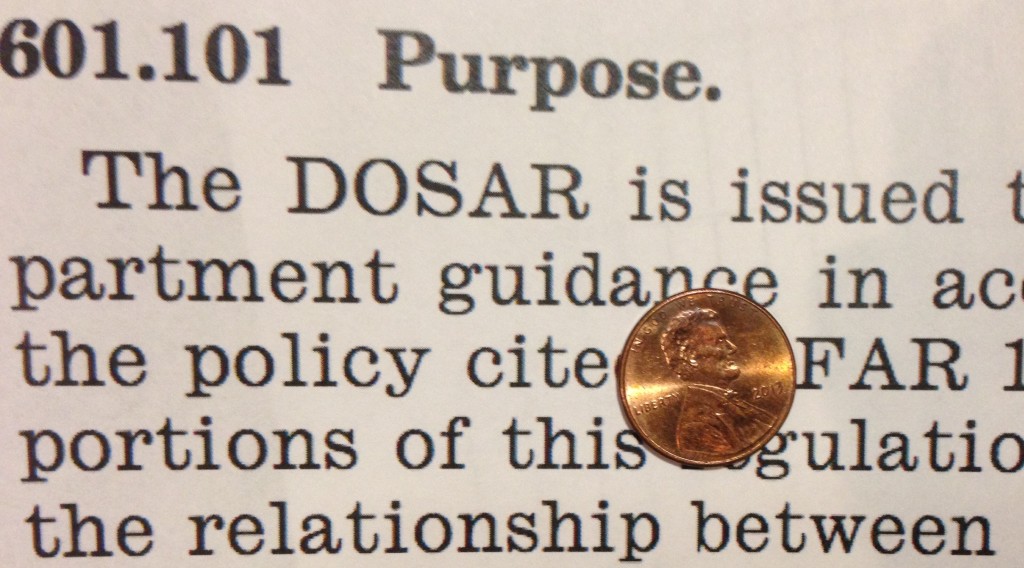This afternoon’s fun was reading the Code of Federal Regulations.
Not all 200 volumes of it, thankfully.
The CFR embodies all the administrative rules which were enacted by federal agencies and which have the force of law. Since my company is managing a federal grant, I needed to re-read the relevant parts in the much-loved Title 48, which deals with government procurement.
48 CFR is filled with the sort of language that makes any person’s eyes glaze over. While reading it today, I nearly fell asleep in mid-sentence.
As a small business owner, it’s easy to be annoyed by the burden of regulations that hang over your head. It’s also much harder to understand federal regulations if you have a small business. The hair-splitting of section, subsection, and sub-subsection is nearly unintelligible… like an actual code language.
That’s because these regs weren’t written for us. They were written for Boeing, General Electric, Booz Allen Hamilton, and the other contractors who get billions of dollars every year from the federal government.
And they were written to cover every imaginable company that does business with the federal government – from FedEx to gold vendors to Johns Hopkins University. And every conceivable type of government purchases, contracts, and grants.
Behind every regulatory sentence, I see a story of a company or a person or an institution that was trying to get as much money as they could.
We like to point the finger at other countries for their corrupt governments, but American history is filled with tales of dirty money, right up to the present day. And because taxpayers don’t like it when their money gets misused, the government keeps trying to prevent it.
That’s how we ended up with all these regulations.
Regulations get added in response to political pressures, and they are almost never rescinded. They just keep piling up.
The more complicated the problem, the more complicated the regulations tend to be.
Congress approved Dodd-Frank to prevent another financial crisis after the 2008 meltdown, but as The Economist notes,
At 848 pages, it is 23 times longer than Glass-Steagall, the reform that followed the Wall Street crash of 1929. Worse, every other page demands that regulators fill in further detail. Some of these clarifications are hundreds of pages long. Just one bit, the “Volcker rule”, which aims to curb risky proprietary trading by banks, includes 383 questions that break down into 1,420 subquestions.
Their correspondent, who is probably one of the few people who actually read the law, concluded wearily, “it is leaving the roots of the financial crisis under-addressed—and more or less everything else in finance overwhelmed.”
Including me.
Day 113: The penny is a tarnished 2013, the year that the CFR hit 175,000 pages.

